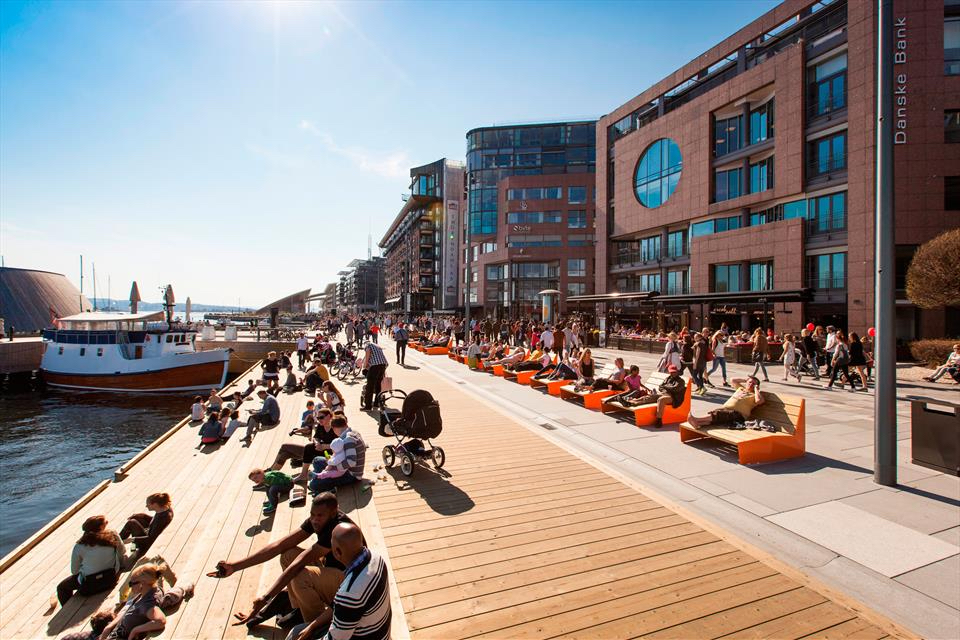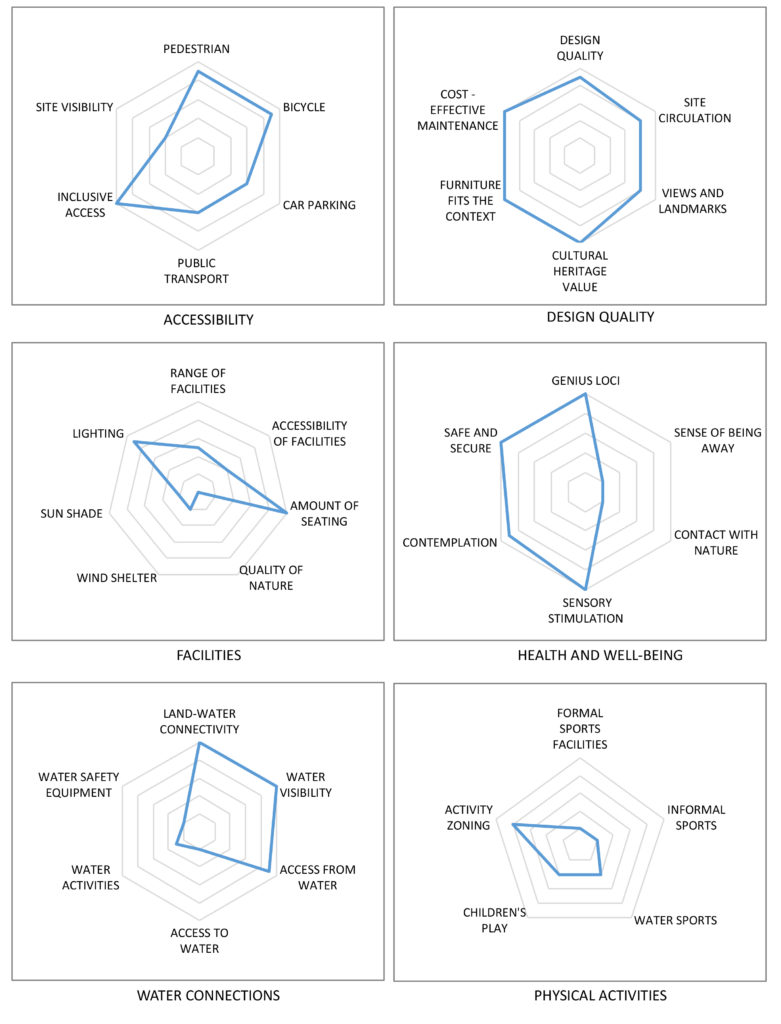
Architect
LINK Landskap
Type of Area
Bay
Land/water interaction
Promenade
Harbour
Terrace/steps
Built Environment Types
Completely built
Scale of Impact
Block
District/ neighbourhood
City
Intervention Scale (Spatial)
Linear development – Single intervention
Project Types
Urban waterfront development
Outdoor Recreation
Economic regeneration
Urban/ Rural
Inner urban area
Visibility and Openness
Partly open
Partly enclosed
Rejuvenation of a Former Shipyard.
This project, completed in 2016 to the designs of LINK Landskap Aker Brygge is part of the rejuvenation of the Aker Brygge, a very popular area of central Oslo situated along the western side of the Pipervika, an arm of the Oslo Fjord. It was the shipyard of the Akers Mekaniske Verksted set up in 1854 and which functioned until 1982 after which the area was gradually regenerated.
The section presented here is known as Stranden (waterfront) and is part of a multi-stage redevelopment connected to a larger-scale project. The aim is to provide public access to the waterfront along a 12km stretch from east to west. The developer, Norwegian Property (NPRO), as well as building new residential and commercial buildings, also focused on the refurbishment of the outdoor spaces, especially along the waterfront. This first phase of the Stranden was completed in 2014. Additional phases in 2015/2016 included the new main square, Bryggetorget and improved access between the waterfront and the city.
The Stranden, promenade was officially opened in May 2014 with further phases completed in 2015/16, including the Bryggetorget, the new area’s main square and a number of connections between Aker Brygge to the waterfront and the wider city.
The plan for the Stranden was aimed to increase both visual and physical contact with Oslo’s characteristic and dramatic fjord landscape setting, while also encouraging a range of appropriate activities – promenading, sitting, social interactions and of course linkages with restaurants and shops located in the Aker Brygge development as a whole.
The project achieved a simpler and cleaner cross-sectional reconfiguration by reorganising and consolidating the promenade, making it wider and roomier so as to cope with higher use while achieving a strong sense of design unity. The resulting space is very flexible for promenading and socialising activities as well as providing more opportunities for spontaneous and generally un-planned activities.
This has resulted in more possibilities to experience the fjord landscape in different ways. The surfacing of the Stranden uses granite paving throughout, with some stepped timber decking in places, especially where boats can tie up. The designers aimed to create a robust and non-directional surface, which resulted in a restrained unified surface directing the visual focus inwards to the new and historical facades and outwards to the fjord. It is complemented by a series of orange benches permitting sitting and reclining and looking at the view across the fjord.
Perception and Meaning
Place identity
Imageability
Sense of place
Place attachment
Legibility
Health and Wellbeing
Restorativeness
Aesthetic experience
Place affordance
Increases socialisation
Interaction with Water
Visual

Website of the project:
https://linkarkitektur.com/en/Projects/Aker-Brygge-Oslo?sp=
Google map reference
The project scores show some limits on accessibility, due to its location in relation to the city in general. Design quality is highly rated in all aspects. Compared to other sites this lacks some facilities – but this is due to the location and project brief. It is also exposed to wind and sun.
Health and well-being potentials are very good apart from any sense of being away – this is in the city centre – and contact with nature. Direct water connections are not part of the design brief so understandably absent, nor is there any provision for formal sports for the same reasons.
